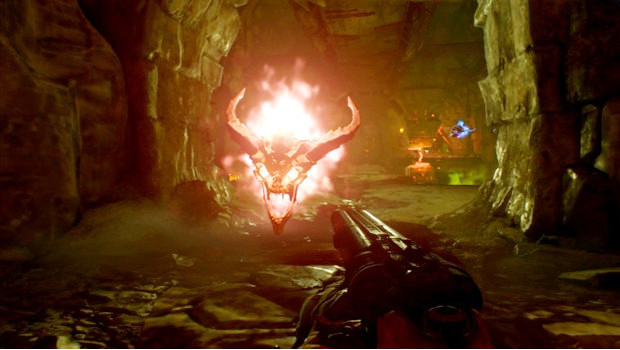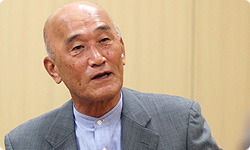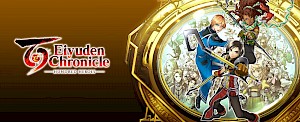Third parties on Nintendo: A change in approach

Posted 16 Feb 2018 at 12:12 by Anil Parmar
At the turn of the millennium Nintendo was getting ready to launch the Nintendo GameCube, the successor to the Nintendo 64 and Nintendo’s answer to the PlayStation 2. Despite having a power advantage, the GameCube had a third party problem before it even launched.
Third parties were not receiving development kits and adequate information on what was at the time referred to as Project Dolphin. In the December 2000 issue of Next Gen Magazine, company spokesman Hiroshi Imanishi confirmed that Nintendo was not chasing third party support and instead expected third parties to come to Nintendo once the GameCube started to grow its install base.
“Nintendo’s position is that we are going to sell our hardware with our own software titles, and if consumers purchase a number of GameCubes, the licensees would become interested in making games for Nintendo’s business. We are not actually approaching them and asking them to make software for Nintendo."
It wasn’t just Nintendo’s approach to development kits that caused frustration – the GameCube’s excessive licensing fees was another factor in pushing third parties away. Whilst the GameCube saw some multiplatform support from third parties during its first 24 months on the market, dwindling sales led to the console getting less and less dedicated floor space in retailers and the case for developing GameCube ports weakened as shelves became reserved for exclusive first and second party software.
The GameCube isn’t the only example of Nintendo struggling to get third party buy in. From the Wii U to the N64, there are dozens of examples of Nintendo making the same missteps and failing to bring in third parties.
But in 2018 a Nintendo direct closed with Dark Souls: Remaster, confirmed and announced for Nintendo Switch day one, alongside the PlayStation 4 and Xbox One versions. A lot has changed.
Indie heaven and third party friendly
Since the Nintendo Switch launched last March it has become home to a huge number of independent video game releases. Whereas the Wii U missed out on a large number of multiplatform indie games, the Switch has become a natural home for such games, especially due to the portable nature of the device and with multiplayer available built into the device.
There is perhaps no better example of this than the huge success of Image and Form’s two latest multiplatform titles SteamWorld Dig 2 and Wonder Boy: The Dragon’s Trap. The Switch version of the former title sold nearly ten times the amount of the Steam version, whereas Wonder Boy sales on Switch outsold combined sales from other launch platforms. The evidence is clear – the business case for developing indie titles on Switch has never been stronger.

But it’s not just these smaller titles that are proving to be a compelling business case. At E3 2017, Reggie Fils-Aime highlighted Nintendo’s approach to making development easier for third parties. He said: “From the development tool standpoint, we need to make it easy, and that’s why have Unreal 4 capable for Nintendo Switch. That’s why have a full suite of development tools there for the teams,” Fils-Aime said. “We’re working on those specialised game engines and making sure developers see a path.”
Whilst the Switch may come with a power deficit to other consoles on the market, it does boast several key traits that make the business case of game development much stronger than ever was the case for previous Nintendo consoles.
These include, but are not limited to:
- Balanced hardware specifications (GPU, RAM and CPU) that allow for scaled down ports of third party titles (i.e. Wolfenstein II) without obvious bottleneck
- Ability to provide a handheld version of a previously home console-only game (Skyrim)
- Access to an audience who may have previously missed out on multiplatform titles (Rocket League, DOOM)
- Friendly developer tools
When it comes to meeting the needs of third party developers no home Nintendo console has ticked as many boxes as the Nintendo Switch. It is worth noting that even ports of existing titles cost significant sums of money and staff time, however we have already seen a number of studios decide that the potential benefits of Switch development far outweigh the cost of development.

The difficult to work with Wii U, and to a lesser extent the 3DS, was ultimately the mistake that Nintendo needed to make in order to make a console like the Switch. Whereas previous Nintendo consoles focused on supplying Nintendo’s own in-house teams with the tools to make games, often at the expense of third party developers, Nintendo’s change in approach with the Switch has seen a willingness to make bringing any software, exclusive or not, as easy as possible.
“For our previous game platforms, creating our own development tools was a high priority for us,” managing executive officer Shinya Takahashi told investor last year. “However, since the start of Nintendo Switch development, we have been aiming to realize an environment in which a variety of different third-party developers are able to easily develop compatible software, such as by making it compatible with Unreal and Unity as well as our own development tools. As a result, even companies with only a few developers have already started making games for Nintendo Switch.
Nintendo has got a lot of things right with the Nintendo Switch, but the importance of the way they are now working with third parties can not be underestimated.






















